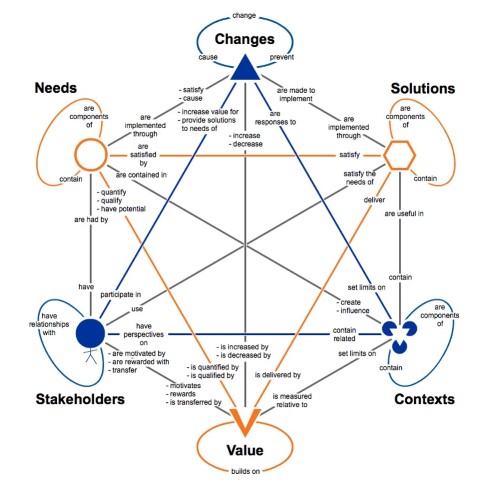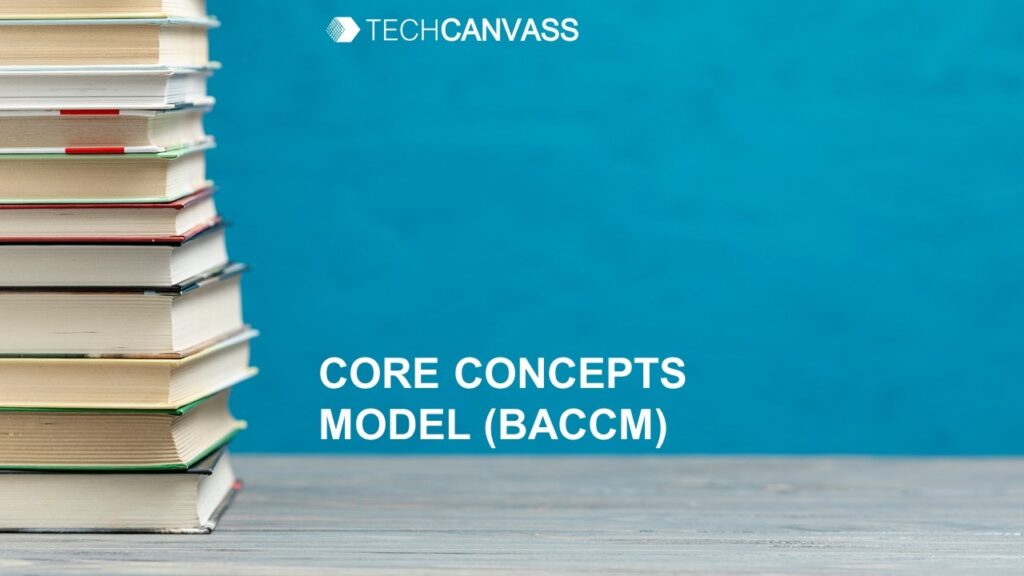The Business Analysis Core Concepts Model (BACCM) is the core framework integral to BABOK Guide v3. Core concepts are fundamental to the practice of business analysis as defined in the BABOK guide. IIBA BABOK v3 is the new version of the BABOK guide for the latest version of business analyst certifications. In this article, I am going to discuss the basics of the BACCM model (Business Analysis Core Concepts Model).
Your best career opportunity is just a few tests away. Start preparing for your Certified Business Analysis Professional (CBAP) certification now!
What is the Purpose of BACCM Model?
The main purpose of the Business Analysis Core Concept Model (BACCM) is to assist business analysts to conduct and communicate their work in a common vernacular that is not reliant on their perspective, industry, methodology, or position in the company. BACCM also directs business analysts in performing better business analysis by assessing the relationships between these six concepts from a holistic perspective and by analyzing the effect of these concepts and relations at any stage during a project in order to establish both groundwork and a path forward.
Essential Key Concepts of the BACCM Model
The Business Analysis Core Concept Model is a set of 6 concepts that define the business analysis practice as per IIBA BABOK v3.
The six core concepts are shown below:

Let’s try and understand each one of them with the help of an example:
1. Need
“Need” is defined by BABOK as:
A problem, opportunity or constraint with potential value to a stakeholder(s)
Need can be thought of as the reason which starts a project. The need arises from the current state of the organization.
For example: An organization is receiving a lot of complaints from customers about the after-sales support provided. So, the organization has a need to address the problem.
An organization selling subscription software, where people subscribe to the software and pay on a monthly basis. In recent times, the dropout period and rates have been very high. 60% of people stop paying after 1 month and 80% after 2 months. The organization needs to address the problem and that’s an example of a need.
What is not Need: Need is not a solution. Solutions are ways to address the need. So, in our first example, if we say that the company wants to automate its after-sales service process, it defines the solution and not the need.
2. Solution
The BABOK guide refers to this core concept as:
A specific way of satisfying one or more needs in a context
Organizational needs can be satisfied or addressed through one or more solutions. A solution to address the need can be specific to an organization as different organizations or situations may need different solutions.
For example: To address the need for resolving poor after-sales service, the organization may use a software application.
A need can be addressed in more than one way, which means that we can have more than one solution.
In our case, the organization can opt for a Software as a Service (SaaS) CRM system, a COTS (commercial off-the-shelf) CRM product, or a completely custom-built software application.
So, how does a business analyst/Organisation decide which is the best solution? BA makes a decision based on multiple factors like cost, benefits, risks, etc.
3. Change
BABOK refers to this core concept as
The act of transformation in response to a need
First, an organization recognizes the need. A need requires a solution. The organization chooses the solution, which is the best fit.
The organization implements the solution (internally or through a vendor). During the implementation of the solution, changes take place within the organization. The change includes team changes, process changes, and more.
For Example: In our example, the support team, at the least, needs to learn how to use the new software. Are they ready? If not, they need to be skilled appropriately.
4. Context
Context refers to the environment in which the solution needs to be implemented. It includes organizational background, structure, locations, etc.
Context may also influence the decision to select a solution to address the need of an organization.
For Example: In our example, Software as a Service (SaaS) CRM option is suitable for Organisation A, but it is possible that custom-built software is more suitable for Organisation B. Organisation A is a small organization with just 10 employees.
5. Value
BABOK refers to “Value” as:
The worth, importance, or usefulness of something to a stakeholder within a context.
A need merits an investment (in a solution) only if it is valuable to address the need. The value can be tangible or intangible.
For Example: By implementing a CRM solution to address the after-sales support issues, the organization wants to keep the customers happy so that they can refer more customers. This is what is meant by “Value”.
Your best career opportunity is just a few tests away. Start preparing for your Certified Business Analysis Professional (CBAP) certification now!
6. Stakeholder
Who is a Stakeholder?
A group or individual with a relationship to the change, the need, or the solution.
A stakeholder is an individual or group who can influence the project or can get influenced by the project as a user. The stakeholders can be from the customer organization, the solution provider, or an external organization.
BABOK guide has proposed specific categories of stakeholders but does not limit them to only these categories. The stakeholder’s categories as per BABOK are:
- Business Analyst
- Customer
- Domain subject matter expert
- End-user
- Implementation subject matter expert
- Operational support
- Project manager
- Regulator
- Sponsor
- Supplier
- Tester
For Example: In our example, the stakeholders are the Support Staff, Customer Service Managers, and the Director.
These core concepts are an important part of the BABOK guide and therefore also important for the IIBA Certifications preparation. Understanding BABOK thoroughly is the most important element of IIBA Certifications preparation.
Conclusion
The BACCM specifies the field of business analysis, facilitates communication between all parties involved, aids in the identification and evaluation of relationships among both core concepts, and provides tools for interpreting the impact and actual outcomes of business analysis methods that have been applied.



